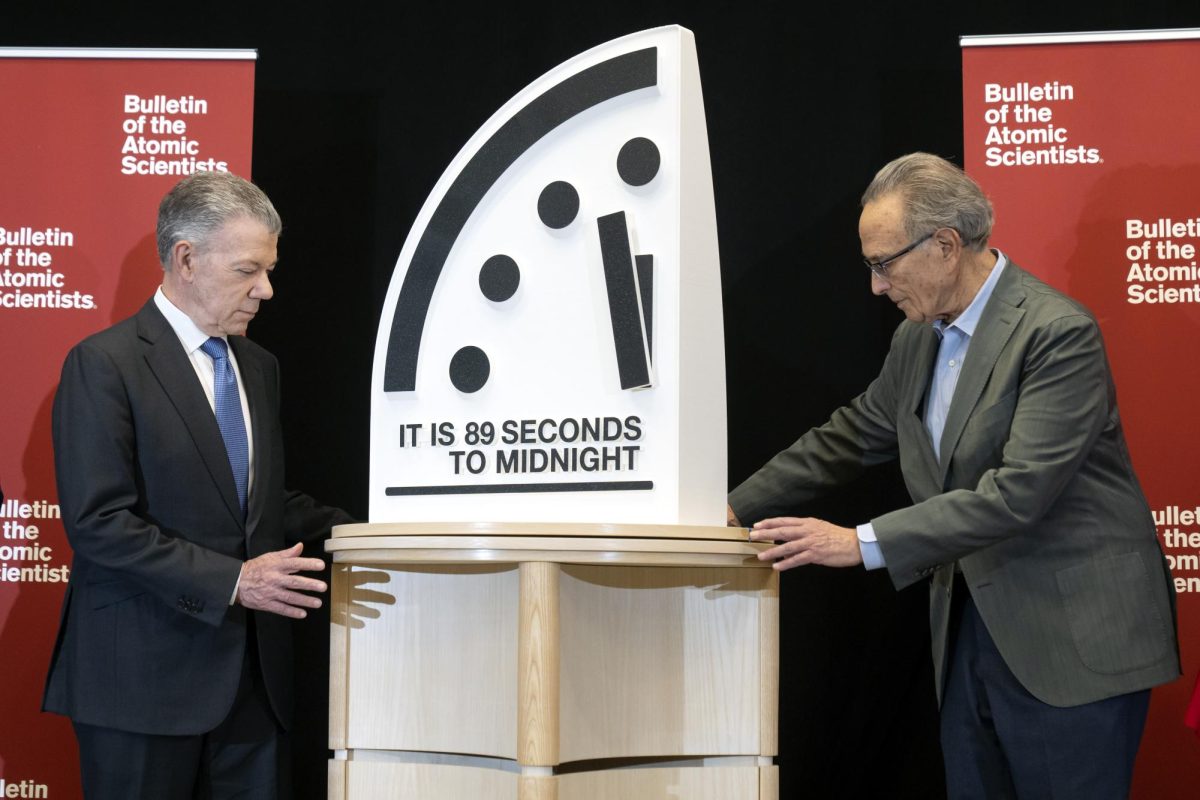Humanity is now closer to extinction than ever, according to the Doomsday Clock, which moved its hands for the first time in two years Jan. 29.
The metaphorical clock was created by the Bulletin of Atomic Scientists in 1941 due to impending nuclear threats and concerns after WWII, according to NPR.
The bulletin moves the clock’s hands closer to midnight when there may be a negative outcome of worldwide political events regarding the likelihood of nuclear war.
When the Doomsday Clock’s hands reach midnight, it will be the point at which humanity has become extinct because of a manmade catastrophe.
The clock gained significant attention when it moved 90 seconds to midnight in 2023, the first year in which it was less than 100 seconds away from annihilation.
In 2025, the hands of doom ticked one second closer, putting the world at 89 seconds until midnight.
According to the Bulletin of Atomic Scientists, the clock ticked closer to midnight this year for two main reasons: the war in Ukraine and conflict in the Middle East, both issues with potential risk of nuclear outcome.
The Doomsday Clock has become a concern for many young environmentalists, and some schools are starting to talk to students about the clock’s significance.
Junior Bella Kennedy said she has been checking the clock since she was in middle school, and the news of it moving closer to midnight disappointed her.
“The [Doomsday] Clock moving closer to midnight is a true reflection on our actions and mistakes,” Kennedy said. “We should be doing everything we can to stop it from moving closer to midnight.”
The bulletin suggests a lot of climate change related issues and that the lack of awareness in such issues have also contributed greatly to the decision to move the hands.
In the Doomsday Clock 2025 statement, the bulletin said “The long-term prognosis for the world’s attempts to deal with climate change remains poor, as most governments fail to enact the financing and policy initiatives necessary to halt global warming.”
Kennedy said the world needs a wake-up call to the real dangers of neglecting climate change and other environmental factors the clock represents.
“As humans, we have the ability to destroy and save the world and we have a timeline that we continue to ignore,” Kennedy said.
Junior Olivia Burkey said she agrees the problem is man-made and humans should be the ones trying to reduce the problems.
“There is so much more we can be doing,” she said. “[Like] reducing fossil fuels and promoting renewable energy,”
Burkey said knowing the clock is nearing midnight makes her feel hopeless, and she worries for the future of the planet.
According to NASA, severe effects of greenhouse gasses and pollution – such as wildfires, extreme rainfall and droughts – are happening faster than scientists expected, and soon enough, certain parts of the Earth may become inhabitable for humans.
“The scientific evidence is unequivocal: climate change is a threat to human wellbeing and the health of the planet,” said NASA’s Intergovernmental Panel on climate change. “Any further delay in concerted global action will miss the brief, rapidly closing window to secure a liveable future.”
Burkey said the Doomsday Clock helps bring awareness to these impending climate change and pollution issues, and does so in a way that is urgent and catches attention.
“The clock is important to give people a scale and understanding of how fast things are changing,” Burkey said.
The time displayed on the Doomsday Clock has dropped significantly, losing 331 seconds since the clock was first created. NASA predicts the time between now and extinction will only decrease.
“[Humans need] to cut down on waste and energy,” Burkey said. “I don’t think it’s too late to turn things around, but the longer we wait, the harder it’s going to be.”


